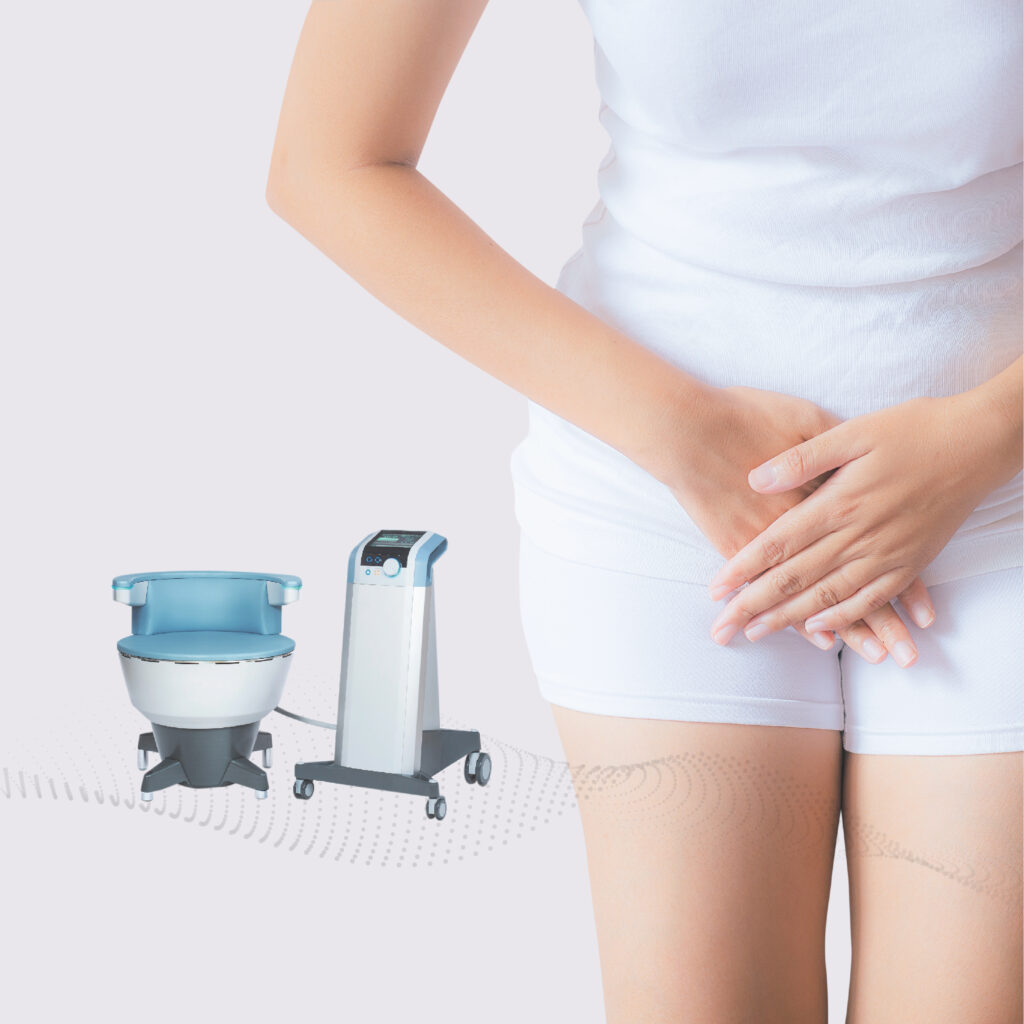Urinary Incontinence - Unable to Control Urination
Date 24.02.2023
Urinary incontinence, particularly during coughing or frequent bathroom visits, is a bothersome condition that can affect daily life. It can occur in both men and women, from young individuals to older adults. It is more common in women, especially as they age, give birth, or reach menopause. The problem arises when there is urine leakage during coughing or sneezing, caused by weakened pelvic floor muscles that support the bladder, urethra, and intestines.

With advanced medical technology, urinary incontinence can now be treated using a chair equipped with electromagnetic wave technology. This device is designed to stimulate the pelvic floor muscles, resulting in stronger and longer-lasting contractions. It improves blood circulation and effectively strengthens the muscles, leading to better urinary control. It is comparable to manually contracting the pelvic floor muscles (Kegel exercises) 11,200 times per treatment session. This helps improve muscle strength, tightness, and urinary control, making it suitable for individuals with urinary incontinence and weak pelvic floor muscles.
The advantages of treating urinary incontinence with electromagnetic wave chair technology include:
- Short treatment duration.
- Convenience without the need to change clothes.
- Non-invasive and painless procedure.
- No hospital stay required, allowing patients to resume their daily activities immediately after treatment. A typical treatment session lasts about 30 minutes, and for urinary incontinence, a total of six treatment sessions are usually recommended, with two sessions per week (or approximately two sessions every three weeks). The number of treatment sessions may vary based on the individual's condition and the physician's discretion. Thonburi Hospital offers a treatment package of six sessions priced at 9,800 Baht (excluding doctor's fees and service charges).
After the first treatment session, improvements can be observed, such as better urinary control and reduced symptoms of urinary incontinence. Studies have shown that 95%* of patients who undergo this treatment experience an improved quality of life (individual results may vary).
For more information, call 1645, press 1, ext. Obstetrics and Gynecology Center or Rehabilitation Medicine and Physical Therapy Center.

